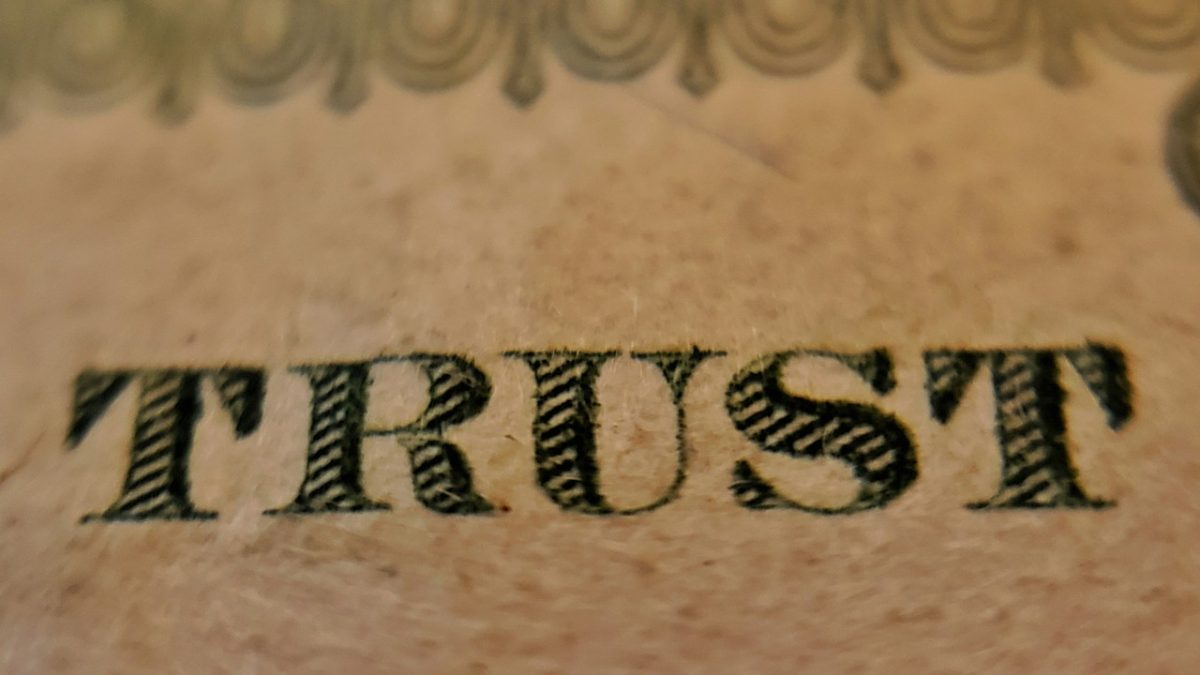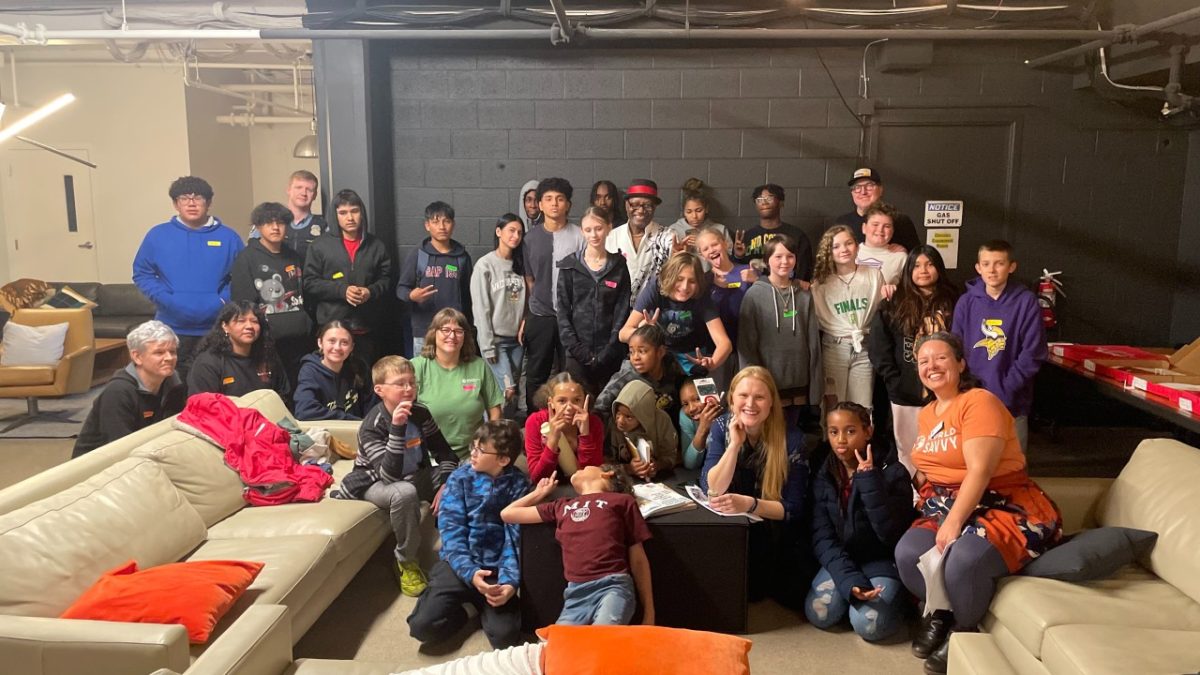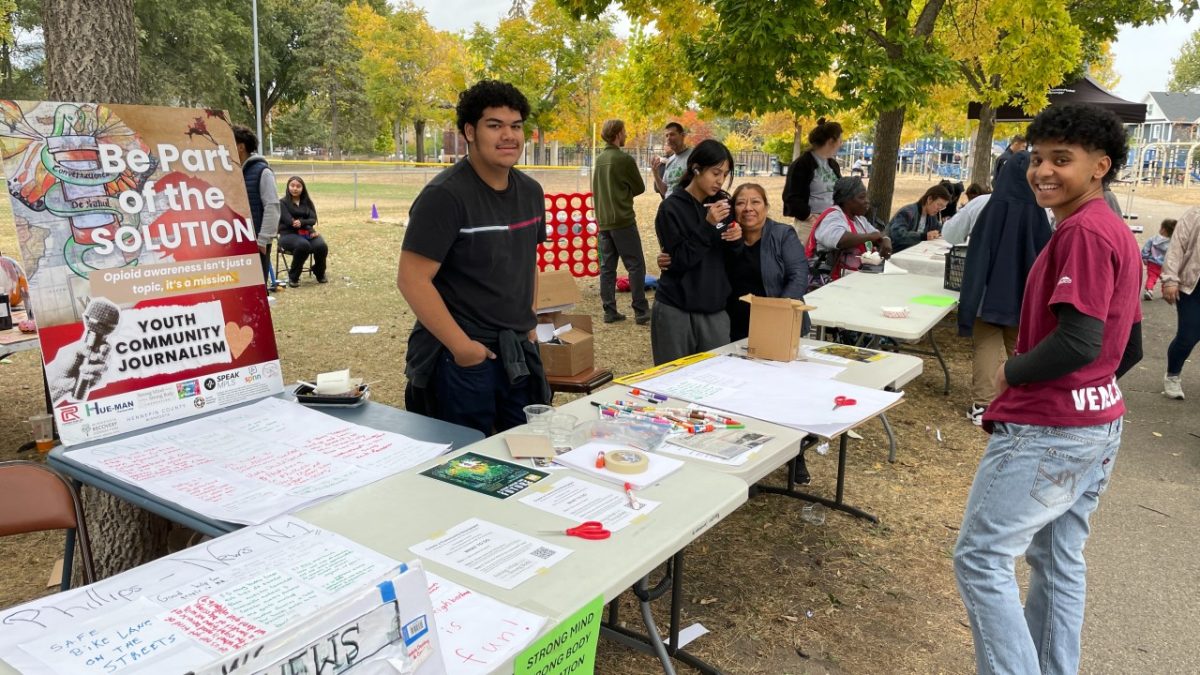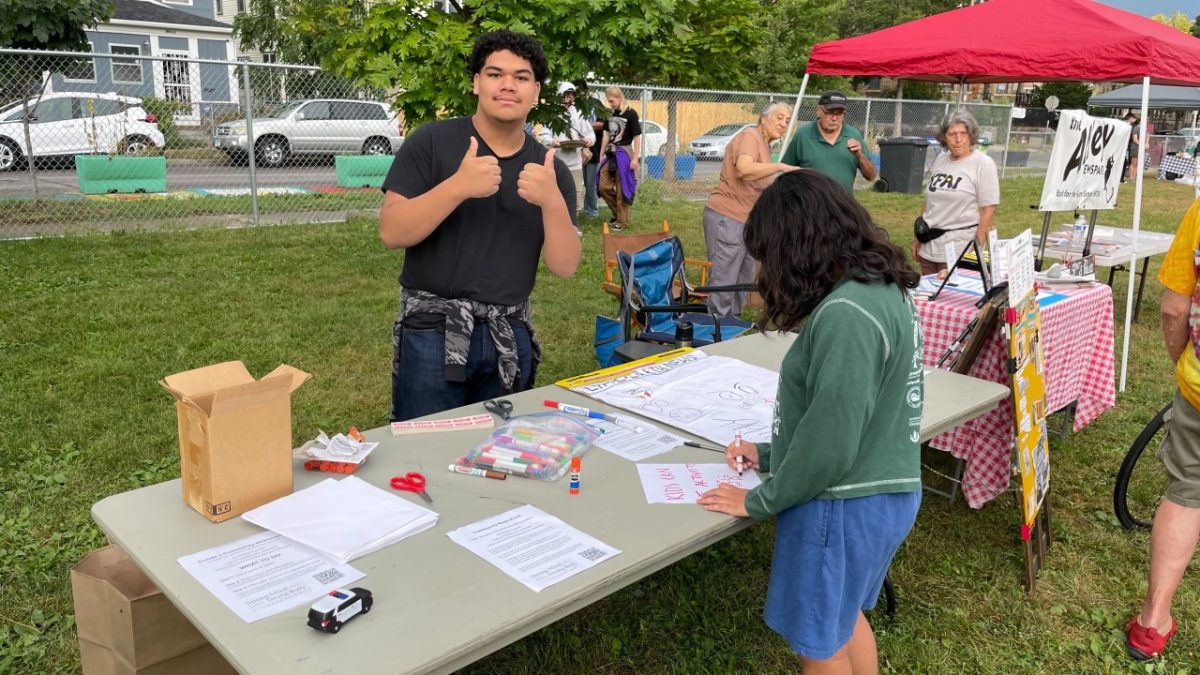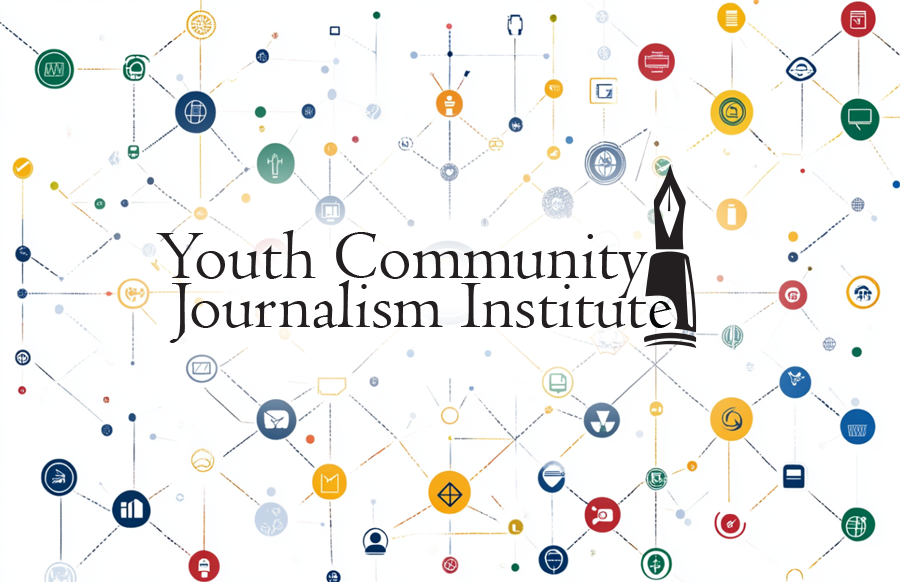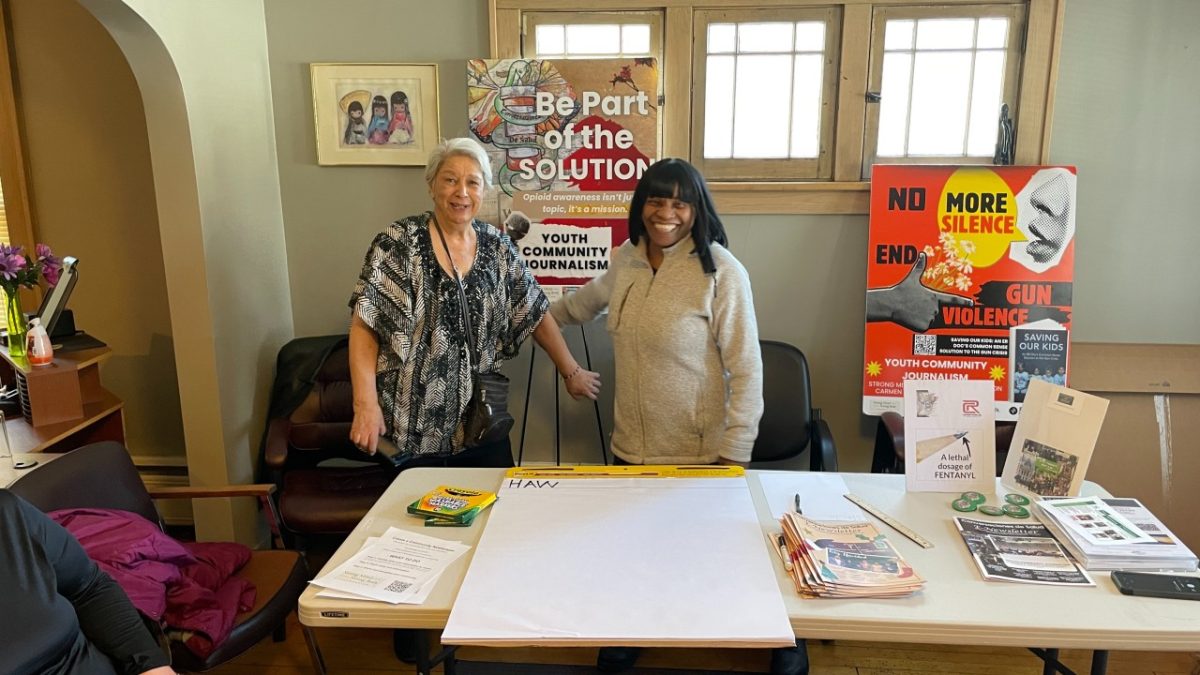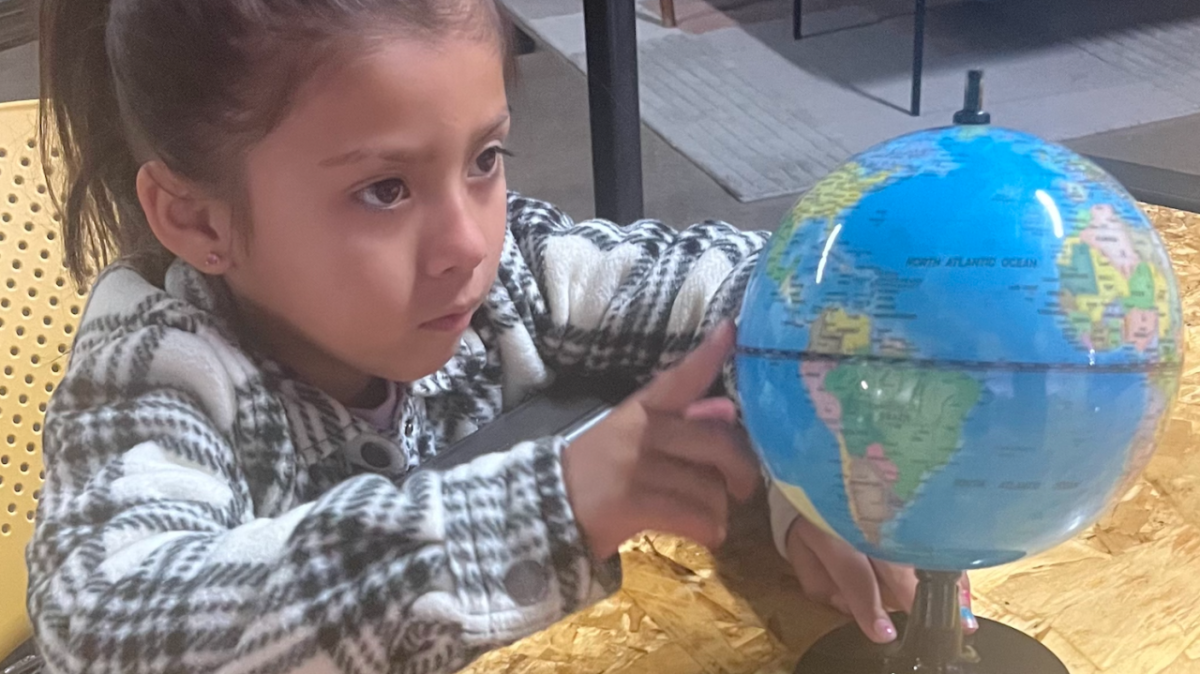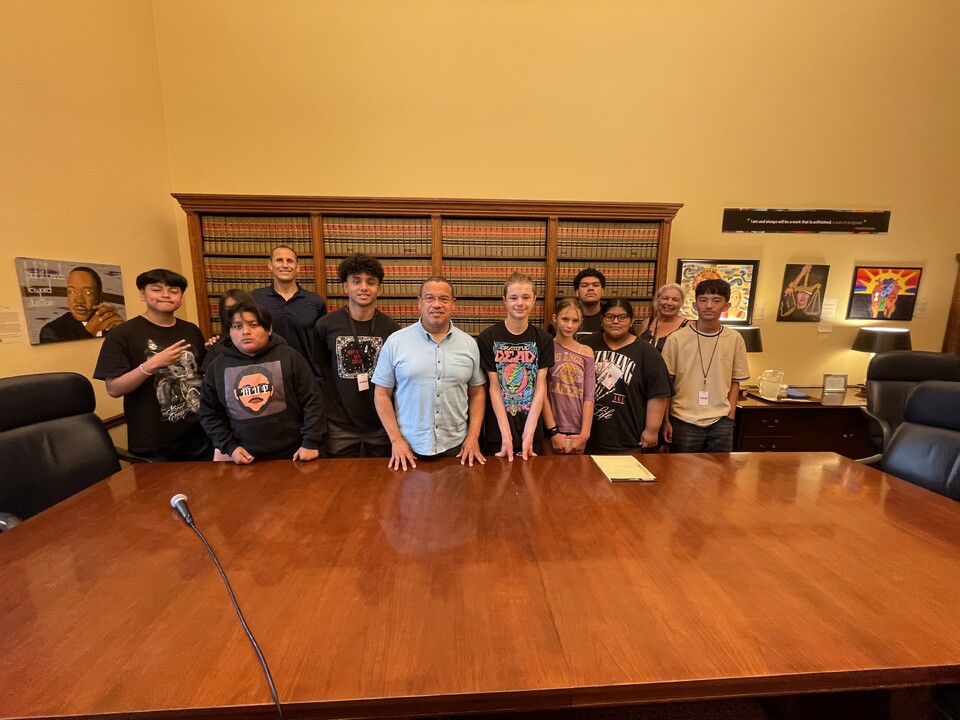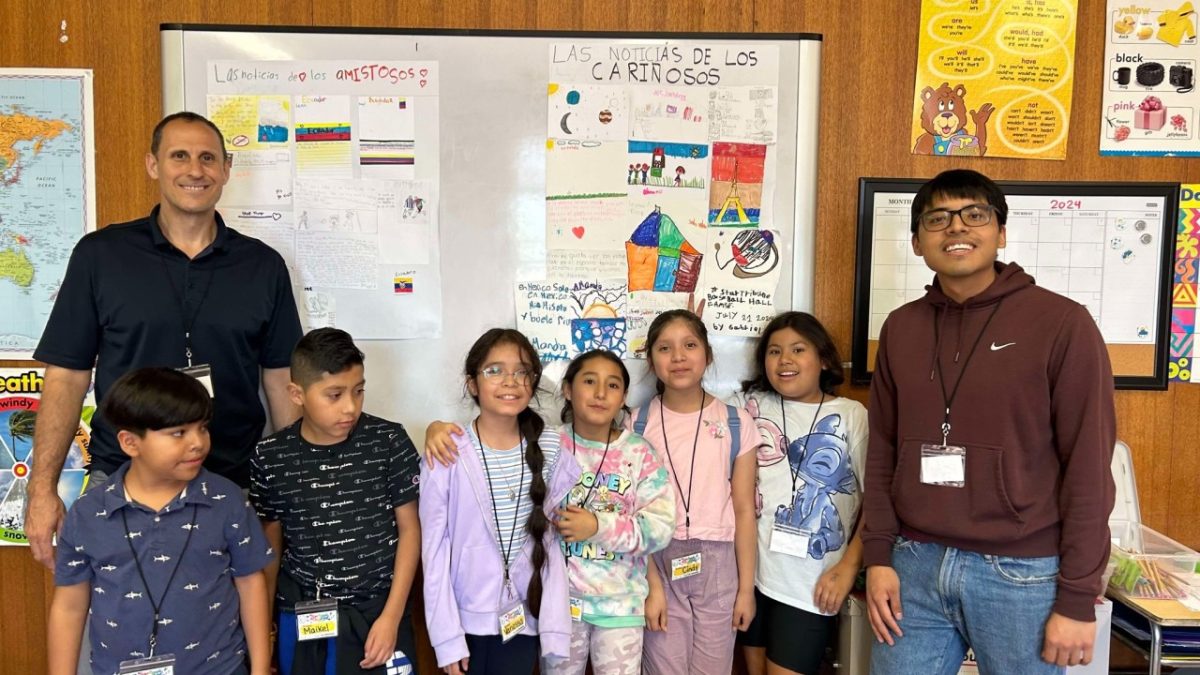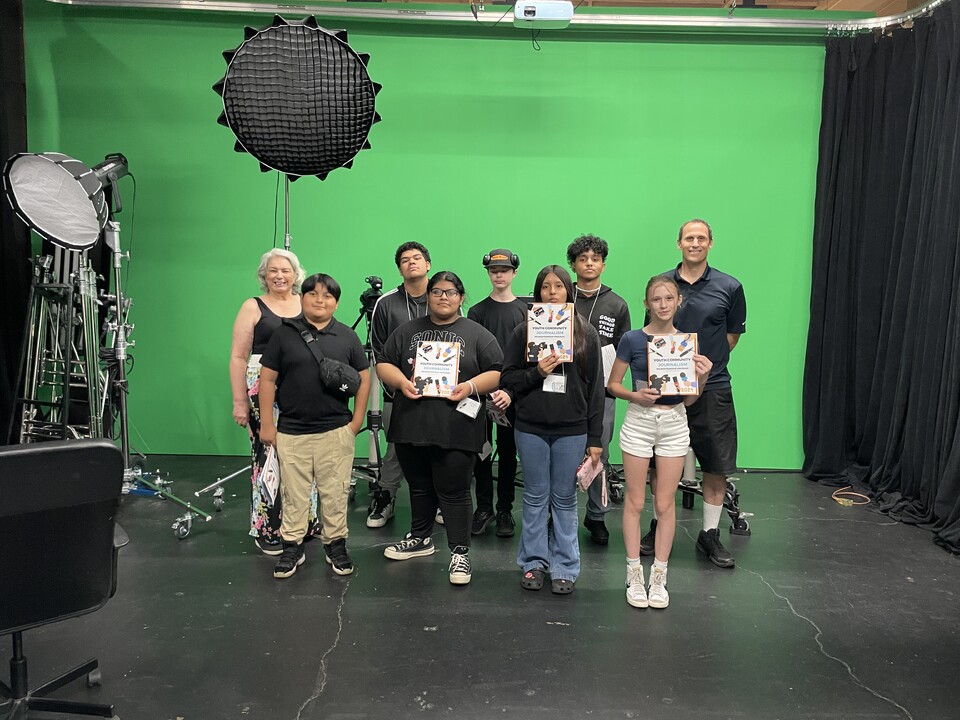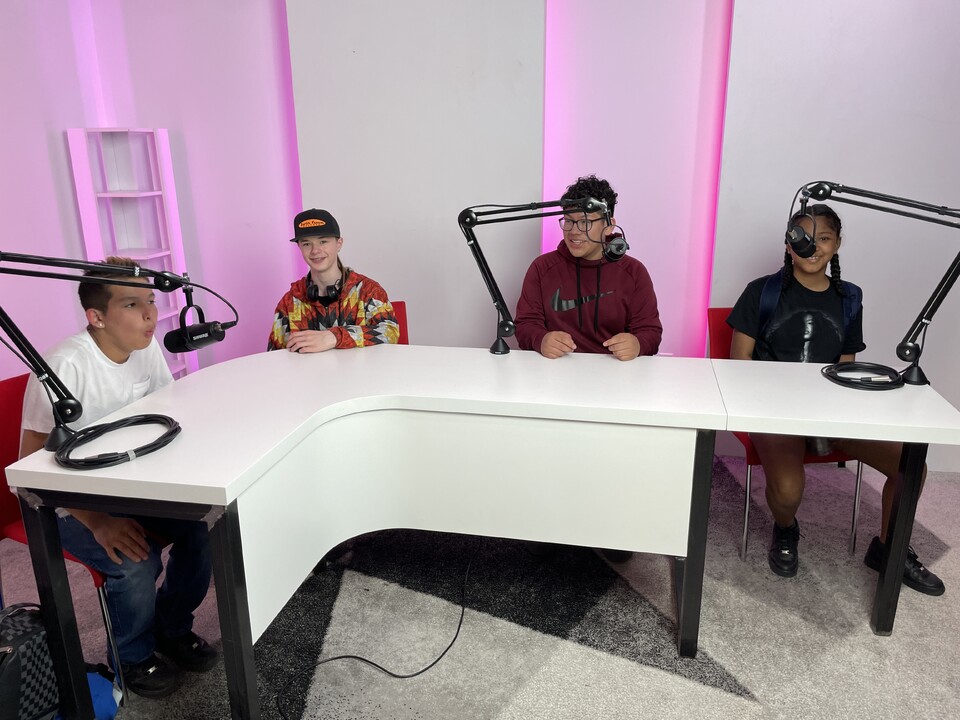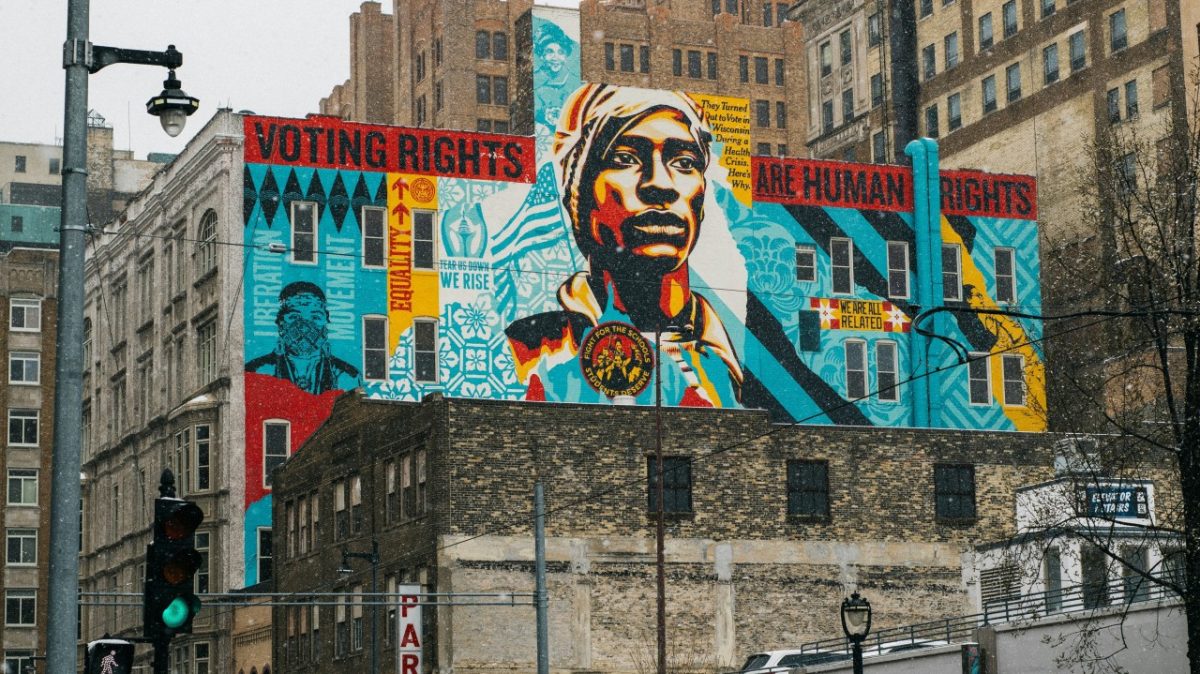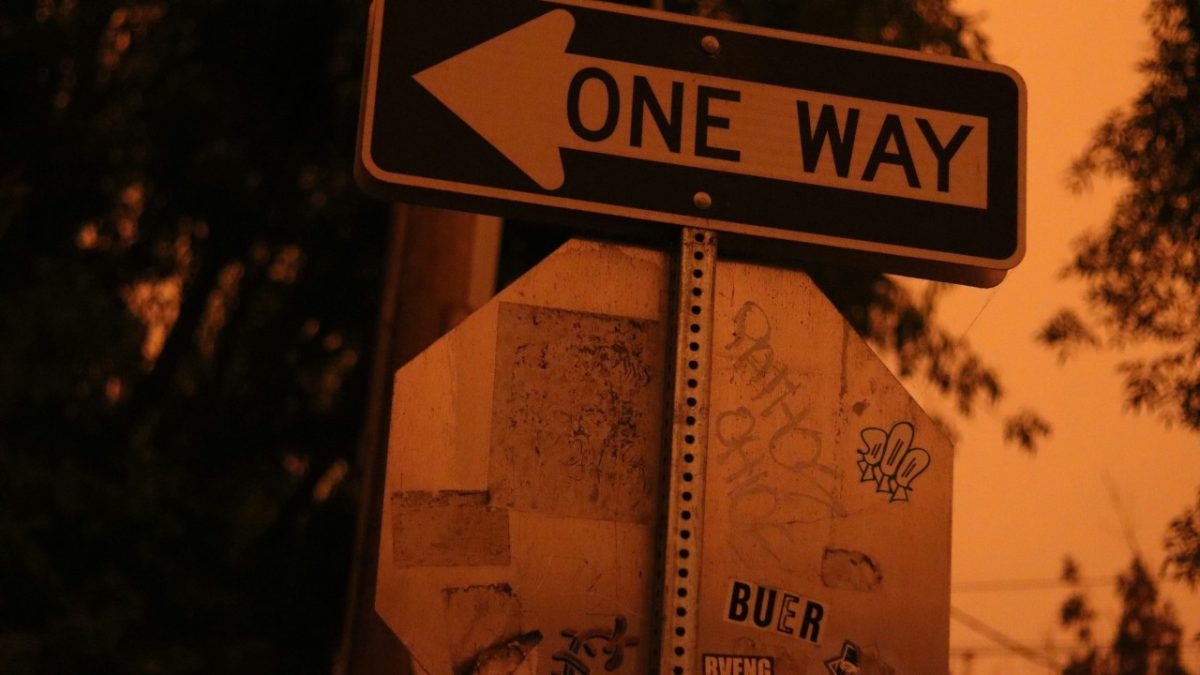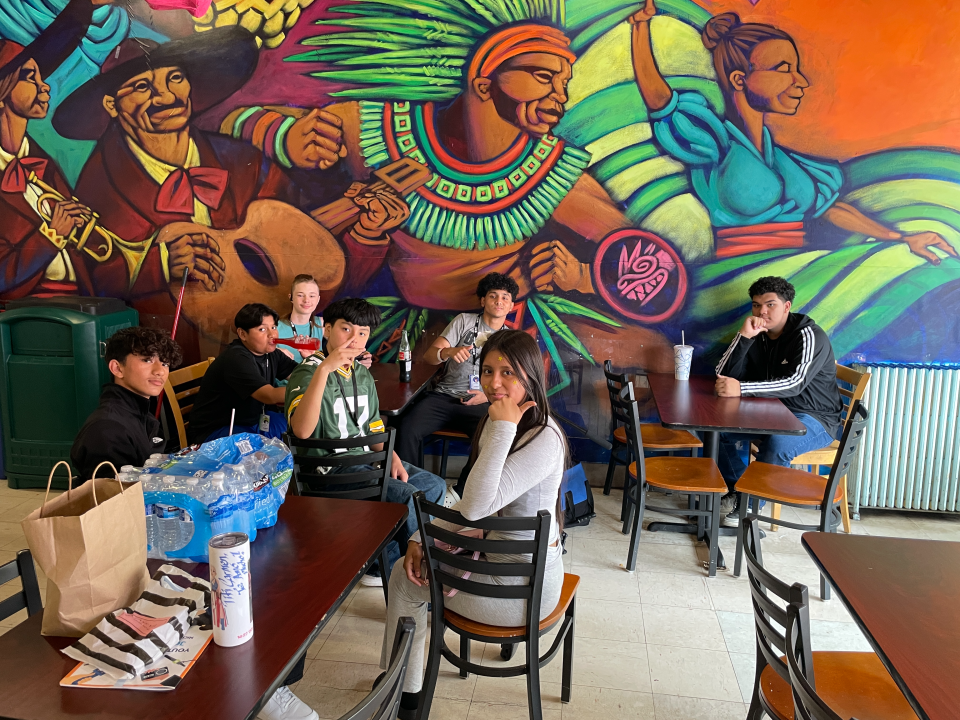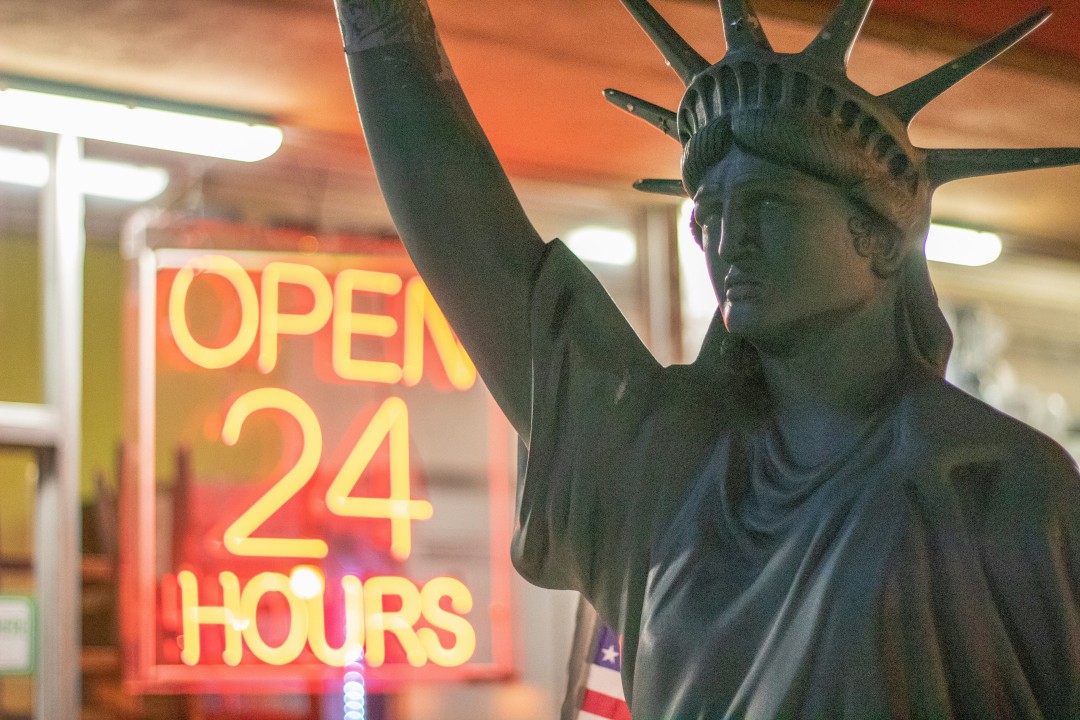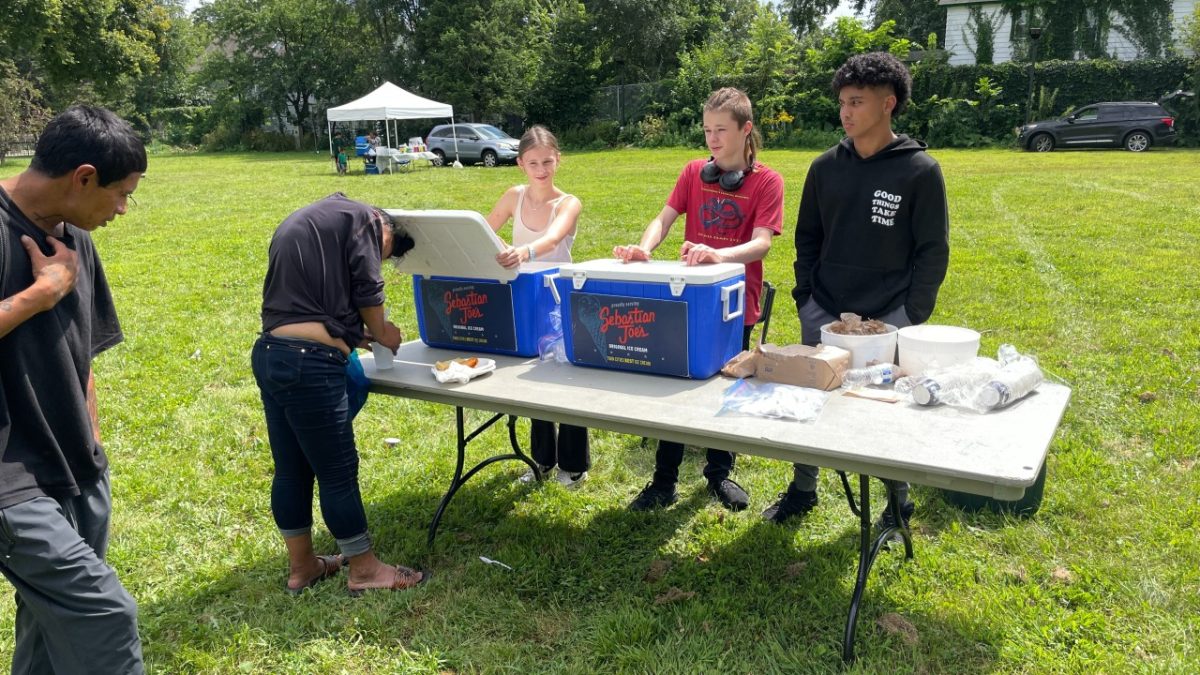It’s not where you start.
It’s how you finish.
And our first youth community journalism solutions festival ended by giving away ice cream to a homeless encampment in Minneapolis.
“This is going to lift everyone’s spirits,” said a woman who lives at the encampment, which is right around the corner from Cedar Field Park, where we had the festival with the Little Earth Indigenous community.
Sebastian Joe’s, a local ice cream shop established in 1984, donated four 3-gallon tubs of ice cream to our festival. We had a few gallons left over in vanilla, chocolate and Pavarotti (caramel, banana and vanilla with chocolate chips) after the Oreo ice cream got all eaten. So we gave the remaining tubs to the unhoused woman to take back to the encampment along with a case of bottled water.
Food was one of the highlights of our festival, which focused on creating solutions with the community through community journalism.
Pizza Luce donated eight pizzas. We also had 200 chicken fingers, a huge tray of French fries, cole slaw, and Texas toast from Raising Cane’s Chicken Fingers. A Latina woman who lives in North Minneapolis, Doña Clara Cabrera, made homemade tamales (chicken, pork, and cheese) and watermelon agua fresca.

But food wasn’t the only highlight.
✅ Three youth from our youth community journalism team participated: Emilia Ortiz, Jesús Rojas and Lyric Rogers. As well as budding youth community journalists, including my 9-year-old son, Cal.
✅ We had soulful music from Re’Unique Live and The Band.
✅ On the community resources side, Sgt. Beverly Rodriguez joined us from the Homeless Action Team (HAT) of the Metro Transit Police Department, which launched in 2018 to connect people experiencing homelessness with services.
✅ Jeanné Rass Portoghese represented the Pediatric Mobile Health at Hennepin Healthcare.

✅ Carmen Robles, from Convesaciones de Saludat Carmen Robles and Associates LLC, had an information table on opioids and substance use disorders.
✅ Kiki Stevens, a harm reduction specialist from NorthPoint Health & Wellness Center, was in the park to share her knowledge with the community.
✅ Christopher Mitchell from the Institute for Local Self-Reliance joined us and talked about his work creating broadband access for all, with a focus on Indigenous communities and building community networks, increasing internet access, and developing local broadband policies that benefit everyone. He mentioned how US Internethad attempted to provide internet access to all 212 rental units at Little Earth, but they were run off the property by people with weapons. The USI crew refused to go back to Little Earth without security. At our festival, Cassie Holmes, a Little Earth community leader, told Mitchell about Little Earth security and protectors who could help get USI crew back at Little Earth to install high-speed internet in every unit.

✅ Minneapolis School Board member Adriana Cerrillo (District 4) and her nephew, Michael Flores, a member of our community solutions team who will be in ninth grade this fall, advocated for a new education campaign that could put $20 million in new annual funding to Minneapolis Public Schools. Learn more at yesformplskids.org.
✅ Little Earth community leader Jolene Jones joined us and shared some helpful information about the Little Earth community.
✅ Holmes shared all the health care services available from the Indian Health Board and had the best swag, including an LED Nite lite with a built-in sensor and reading glasses.

✅ Ariah Fine, a neighborhood specialist who manages the Partnership Engagement Fund for the Neighborhood and Community Relations Department in Minneapolis, stopped by to build community connections.
✅ On the media side, The Alley, a community newspaper serving the Phillips community since 1976, was there.
✅ So was Eticha Gudeta Fufa, a journalist and CEO from the Oromo Diaspora Media, a media organization serving the Oromo (an ethnic group from Ethiopia) in Minnesota, where the Twin Cities are known as Little Oromiawith over 50,000 Oromo people.

✅ Kyndell Harkness, the head of culture and community at the newly rebranded Minnesota Star Tribune (where the 157-year-old media company has a new vision to be the heart of the voice of the north), brought two other The Minnesota Star Tribune journalists, videographer Amanda Anderson and photographer Alex Kormann.
✅ All of these media organizations are eager to bring more community journalism opportunities to the community and create a healthy media ecoystem that works for everyone.

This is exactly what communities like Little Earth need. The Indigenous community is one of the lowest-income communities in the Twin Cities and America’s first Native public housing complex.
But despite all of the highlights, our first youth community journalism did not go off without a hitch.
The day started with some heavy rain, and the rain got us good again before the festival closed.
We learned there was an Indigenous powwow happening at the same time as our event.
We had a journalism activity planned for youth and community members to create a one-sheet newspaper called “Little Earth News.” After a young girl wrote the name for the paper, in beautiful lettering, we didn’t get any stories from the youth or community, aside from two drawings at the end of the day.
Not every young person got food because some community members ate all of the food since we didn’t have people serving the food, and people could take whatever they wanted.
️ We didn’t have a raffle to give away gift cards from Target, Raising Cane’s and Erik’s Bike Shop.
These lessons will help us grow and get better.

We plan to have another youth community journalism solutions festival on Sept. 21 at Cedar Field Park and will make our next event even stronger based on the lessons we learned and feedback from Little Earth community leaders.
We will have many weeks to prepare, and students will be back in school. We can promote free food and raffle with free giveaways.
We will have an adult community representative manage all tables, including food tables. This way, a few people won’t be able to take mass quantities of food, and the food can be more evenly shared.
We will write step-by-step instructions for the journalism activity table, so everyone understands the assignment of creating a community story for their community newspaper, Little Earth News.
Step 1: Pick a topic for your community story. It can be about any topic of interest for the community: local news, sports, entertainment, food, culture, business, weather, comics.
Step 2: Decide how you will tell the story. The story can be a written story, a drawing, or a written story with a drawing.
Step 3: Create your story.
Step 4: Determine where you want your story to go in the newspaper, and lay it out.
Step 5: Cut the paper with scissors (if necessary) to make your story fit on the page.
Step 6: Glue your story to the newspaper.
Everyone who creates a story for the newspaper is entered into the raffle.
We will have places around the festival where people can share news and information. They can write their comments and ideas on pieces of paper. Anyone who shares news and information will be entered into the raffle. If they want to share news and information anonymously, they can do that also. We will provide prompt questions:
What is your biggest need?
What is the community’s biggest need?
What is a big issue in the community?
What would make your life better?
What is the greatest strength of the community?
What community strength could help create a community solution?
What is a solution idea for a community problem?
How can we make the community stronger?
How can we lift up the spirits of the community?
Who is a local hero in the community?
What’s good in the community?
You have to start somewhere. As Carmen Robles summed up:
Congratulations on a wonderful event! The first one is always the most challenging, but look at how everything came together.
The Native leaders gave you the nitty gritty of the dynamics of the park and area. This will make the next event run smooth because they know you now, see what your vision is and they will support that while you support them … win-win! Awesome!!
Your children were so helpful!!!! I wish I had my camera, missed some great shots. Mille was so happy handing out ice cream. The Latina in her exploded today … feeding la jente!
The artist who did the sign wants to be a journalist! Today’s event planted that ‘seed’ de esperanza. The future is bright!
Jesus and Lyric … WOW!!!
Excellent work! A great beginning…congratulations!!! ️

Connections were built at the festival that can help the community.
We can help get more health services, human resources and humane housing options for homeless people.
We can help get high-speed internet for the Little Earth community and broadband access for Indigenous people in urban and rural areas across Minnesota.
We can help get more funding for Minneapolis Public Schools and all schools in the state.

After the event, I learned more about Amanda Anderson’s solutions journalism work. She mentioned that she was a solutions journalism fellow with the Solutions Journalism Network. Before working at the Star Tribune, she was the producer, editor and host of the public affairs program Compass, a solutions journalism-centered series for Pioneer PBS that featured current topics relevant to communities in southwest and west central Minnesota, northwestern Iowa, eastern South Dakota and southeastern North Dakota.
I watched a Compass episode called “Aging Well in Rural Minnesota,’ about a choir in Granite Falls for people living with dementia and their care partners. One quote from Jan Lerohl, the senior advocate for Yellow Medicine County and the director of the Building Bridges Memory Choir really resonated:
“In a dementia friendly community, my view is that people in a community are aware of people who may be experiencing this. And they are more sympathetic, are able to help them in a situation where maybe they are having trouble communicating with what they want or need. But we want people to realize that people who have these conditions that are dealing with this is that they can do anything anyone else can do. They just want to be included. They want to be part of the communities.”
This quote can apply to any community. If we are aware of people and sympathetic to their experiences, we can help them. They may have difficulty communicating their needs, so we need to be patient and compassionate and get creative in how we address them.
Everyone just wants to be included. They want to be part of the communities.
Everyone has a part to play in making our communities better.

It starts by building connections. Then give what you can.
Together, we can empower communities and make them stronger.
